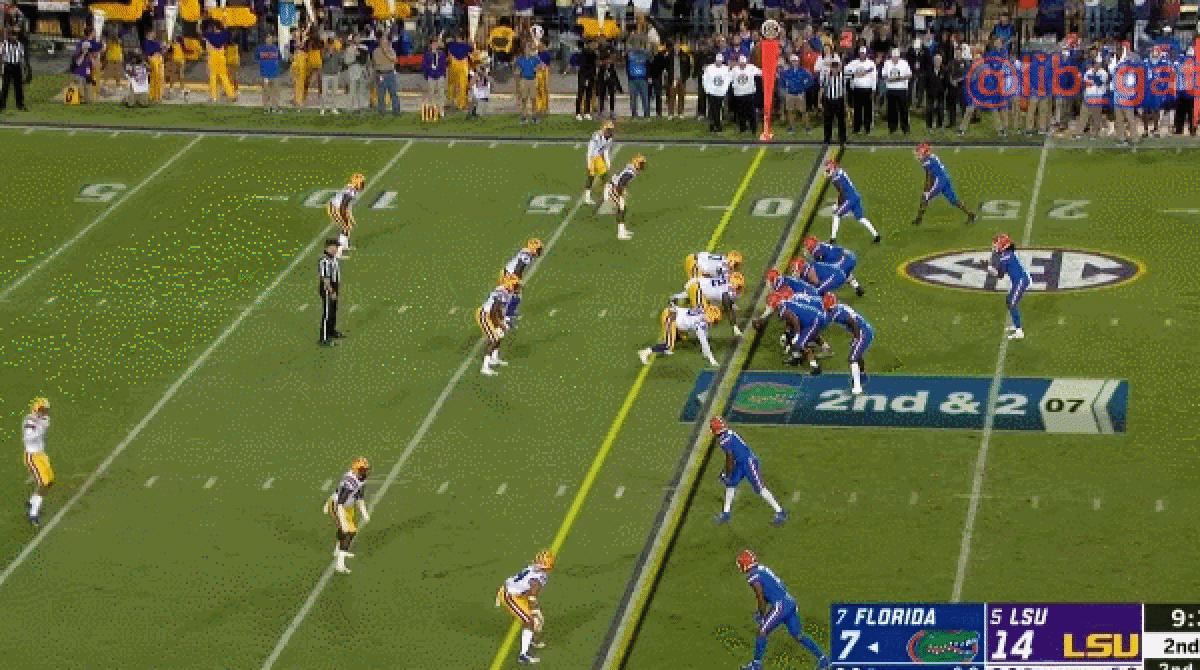Emory Jones' Role Should be Expanded to Finish the 2019 Season

Without trying to be blunt, it's likely that the Florida Gators' 2019 season is over, at least from an SEC Championship and College Football Playoff perspective.
Sure, Georgia could lose two games while Florida wins out to get to Atlanta, but the Gators do not control their own destiny any longer following their embarrassing loss to the Bulldogs this past Saturday. While Dan Mullen and the team won't ever tell you this, it's time to start thinking about the future a bit while contending for a New Year's Six Bowl.
That future is Emory Jones.
Yes, Kyle Trask has performed above all expectations in place of Feleipe Franks, but there's a reason that Franks was the starter in the first place: He's mobile, and has a cannon.
Trask, albeit a fantastic game-manager who doesn't make many mistakes through the air, doesn't possess those traits.
Emory Jones does. There's a reason Mullen targeted Jones so early in his career as Florida's head coach, and signed him to the 2018 class a month after taking the job. And if you look at the quarterbacks Mullen has targeted beyond Jones, you'll find three prospects with the same bio.
Jalon Jones, who was a part of the 2019 signing class but transferred to Jackson State amidst controversy over a sexual battery case, was the No. 10 dual-threat QB in the past class according to 247Sports.com. 2020 commit Anthony Richardson (Eastside HS - Gainesville, FL) is the No. 9 DT-QB in his class, and while Carlos Del Rio (McEachern HS - Powder Springs, GA) is considered a pro-style QB by 247, the 2021 commit has posted 427 rushing yards and six touchdowns on 86 carries this year.
There's a trend here, that has come up early as Mullen lays out the foundation for his system: Mobile quarterbacks are preferred. Mullen is a good enough strategist to cater to Trask's West Coast offensive style of play, but it's clearly not his preference.
With that being said, Mullen could look to take advantage of Florida's final three games this season, and even the bowl game, to get a better look at Emory Jones' ability with more snaps. As a floor, Jones could be utilized beyond his 2.2 carries per game this year to generate a spark in the run game, given his 5.9 yards per carry.
But given Jones is entering a pivotal third year in the system that Mullen is building, it's time we saw Jones throw more.
While he has more passing attempts (28) than rushing (20), Jones has not thrown a pass in Florida's past two games, and only threw three against LSU despite playing 12 snaps. He threw seven passes against Auburn, completing five for 28 yards, but most of those came on his full drive in place of Trask, who briefly left the field to tend to a sprained MCL.
Mullen rationalized Jones' lack of action on Monday, stating that the Gators "have different packages and different things where we want to get him into the game." However, Jones only saw one snap against Georgia - in which he took a carry for two yards.
"I wanted to get him into the game more on Saturday and just how the game played out didn't dictate that," Mullen continued.
"Like everybody says 'Do you want to do this? Do you want to do that?' No, I want to do everything. You know what I mean. But the individual games dictate how it's played, and our job is to make sure we're adapting to put us in the best position to win that specific game at that time, so obviously I wanted to get him in the game a lot more on Saturday. We had a plan to get him into the game a lot more on Saturday. As the game played out, it didn't dictate that to happen for us."
Considering that Florida would need the unlikely outside help of Georgia losing twice to advance to the SEC Championship, perhaps the three upcoming games should include a plan for Jones that isn't dictated by the results of the game. And it's not like any of the opponents are nail-biters, either.
Now is the time to expand Jones' role to prepare him to compete for the starting job next year. It'll be his third year in the system as Mullen's prized first QB signing, and his strengths fit Mullen's offensive philosophy.
His contributions to the run game have been nice, yet limited, as he's scampered for 118 yards, with 60 coming after contact and generating six first downs on the ground. It's pretty clear that he is a threat with his legs, but it's time to truly see where his arm can take him - you can see some nice traits now and then when Jones throws his 3.1 throws per game (and so few in important contests), but not nearly enough to draw conclusions from.
And even when he does throw, the route concepts and play designs have been limited. 16 of Jones' 28 attempts this year have come from behind the line of scrimmage through up to 10 yards downfield, yet he's completed four of his seven passes between 10-20 yards downfield for 71 yards.
His lone incompletion to the intermediate middle of the field zone was a perfectly thrown pass to tight end Kyle Pitts against LSU that would have gone for six had safety Grant Delpit made a perfect play on the ball as Pitts was bringing it in.

Faking a quarterback keeper to establish a pull block from the right side, Jones patiently allows a throwing lane to develop from Pitts' outside release turning into a short post. While the angle doesn't show it as well, Delpit timed his hit on Pitts perfectly and actually made contact with the ball as Pitts brought the ball in, which led to the drop.
And we've seen similar luck before, dating back to Jones' freshman year.
That is a DIME from Emory Jones. Pitts drops it but still pic.twitter.com/CAHLJrBkh1
— InAllKindsOfWeather.com (@AllKindsWeather) November 17, 2018
The bottom line is, it's clear that Jones can sling it. There's a weird narrative that gets pushed around claiming otherwise, which doesn't hold up as evidence suggests otherwise.
We just need to see more of the evidence.
How does Jones handle pressure? In a limited sample size, the results are pretty solid. Over his career at Florida, Jones has completed 5-of-10 passes under pressure, yet complied 74 passing yards on such completions, accumulating four first downs through the air - all according to Pro Football Focus.
And blitzes don't appear to stress Jones from the data collected, as he's gone 9-13 against the blitz for 64 yards since 2018. And he has only scrambled twice in such situations - he is poised enough to stand back and deliver an accurate throw under pressure and against the blitz.
Emory Jones isn't just a running quarterback.
Jones has the intangibles, and has displayed the ability to move the ball around with his arm well enough to earn more opportunities to finish the 2019 season. And Florida is in a great spot to expand his role, with an easy slate of games to finish their season and their floor just about equaling their ceiling, as they're likely to only play in a New Year's Six Bowl this season.
In order to truly allow Jones to compete for Florida's starting quarterback role next season, as he should and as Mullen will likely authorize, it's in the Gators' best interest to let Jones loose over the next three games.
Start Trask, of course. He has earned all three remaining starts this year, and the majority of the snaps given his effectiveness and leadership ability. In no way is any of this a dig towards what he has provided and that must be understood.
But Jones needs more than 3.1 throws and 2.2 rushes per game. Both numbers should be higher, but Florida needs to start allowing Jones to at least throw the ball five times per game to finish the season.
Last season, Jones threw 16 passes against Idaho in Week 12. Granted, the opposition was an FCS team, but he's ready to see more action against SEC opponents to close out the 2019 season and to give Florida a glimpse of the future.
Hopefully, we can get at least 16, and maybe even more, throwing attempts from Jones through the end of November.
